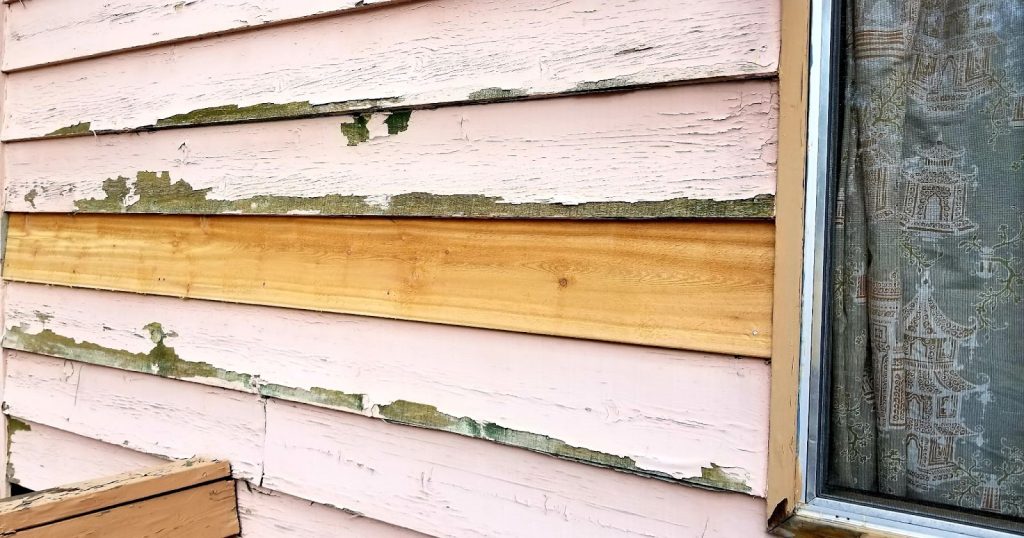Washington’s wet and often unpredictable climate makes homes especially vulnerable to hidden siding rot. While paint may make your home’s exterior look fresh, it can also conceal serious damage beneath the surface. Spotting siding rot early is essential for maintaining your home’s structure and preventing costly repairs.
In this article, we’ll show you how to detect rot hiding under layers of paint—before it spreads.
Why Siding Rot Is Common in Washington
With frequent rainfall, coastal moisture, and high humidity in areas like Seattle, Olympia, and the Puget Sound region, moisture intrusion is a common issue. When water gets behind painted siding and has no way to escape, it can lead to dry rot, soft wood, and mold—all hidden from plain sight.
Homeowners concerned about these risks should consider a professional siding rot inspection to catch problems that might not be visible at first glance.
1. Look for Paint Bubbles or Blisters
One of the earliest signs of hidden rot is bubbling or blistering paint. When moisture becomes trapped behind the paint layer, it causes the paint to lift. This often happens near:
- Window trims
- Door frames
- Roof lines
- Bottom edges of siding panels
If you see bubbling, it’s time to investigate what’s going on beneath.
2. Press Gently on Suspect Areas
Paint can hide damage, but soft wood cannot lie. Use your fingers or a blunt tool to gently press on the siding. If the wood feels soft, spongy, or gives under light pressure, there’s a good chance rot is present.
Focus on lower siding sections and areas near gutters or downspouts—where water is most likely to pool or seep in.
3. Discoloration and Staining
Even under fresh paint, water-damaged wood may show dark streaks or unusual stains. You might notice:
- Brown or yellowish marks
- A grayish hue on painted surfaces
- Areas that dry slower after rain
These signs suggest that moisture has made its way behind the paint, which often leads to hidden decay.
4. Mold or Mildew Growth
Mold or mildew on painted siding is not just a surface issue. It can signal a deeper moisture problem beneath. Look for:
- Black or green spots on the surface
- A musty smell near the siding
- Persistent mildew even after cleaning
If any of these issues persist, it could be time to explore expert siding rot repair to prevent further structural damage.
5. Gaps or Separations in the Siding
Rotting wood often causes the siding to warp, crack, or shift. Over time, the affected areas may pull away from nails, leaving visible gaps or seams. These gaps allow even more water in—speeding up the rotting process.
Inspect corners, joints, and the base of the siding where movement is most common.
6. Listen for Hollow Sounds
A simple but effective test: tap on the siding with a screwdriver handle or similar tool. Healthy wood will produce a solid “thud,” while rotted areas sound hollow or soft. Compare several areas to notice the difference.
7. Inspect from the Inside
If you suspect rot on an exterior wall, check the inside of that wall as well. Signs may include:
- Peeling paint or wallpaper
- Soft drywall
- Musty odors
This cross-check can help confirm whether hidden siding rot is affecting your home from the outside in.
Final Thoughts
Painted siding may look flawless, but beneath the surface, moisture can silently cause extensive damage. By knowing how to spot subtle signs—like bubbling paint, soft spots, or discoloration—you can catch hidden rot early.
Taking the time to inspect your siding thoroughly, especially in Washington’s damp climate, helps protect your home’s structure and value. Don’t ignore the warning signs. With routine checks and prompt action, you can stay ahead of rot—before it becomes a much bigger issue.
Looking to expand your knowledge? Check out more of our articles!







